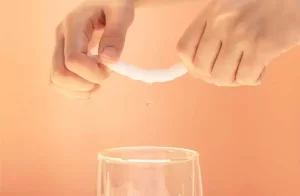At Winner Nonwovens, we specialize in high-quality nonwoven products that provide practical solutions across industries. Among our offerings, non-woven cotton fabric stands out for its versatility, durability, and comfort. Understanding how this fabric is made helps to appreciate why it is widely used in healthcare, personal care, and industrial applications.
How Non Woven Cotton Fabric Is Produced
Nonwoven cotton fabric is created through a process that does not involve weaving or knitting. Instead, individual cotton fibers are bonded together to form a cohesive sheet. This process often begins with carding, where fibers are aligned and cleaned. The aligned fibers are then layered to achieve the desired thickness and strength.
The next step typically involves bonding the fibers. There are several methods to do this, including mechanical, thermal, and chemical bonding. Mechanical bonding may use techniques such as needle punching, which entangles the fibers for stability. Thermal bonding involves applying heat to fibers that contain thermoplastic components, causing them to fuse. Chemical bonding uses adhesives to hold the fibers together. The chosen method depends on the intended application and required fabric properties.
Once bonded, the fabric can be finished to enhance specific characteristics such as softness, absorbency, or water resistance. This controlled production process ensures that non-woven cotton fabric maintains uniform strength, texture, and performance.
Advantages of Non Woven Cotton Fabric
One of the main advantages of non-woven cotton fabric is its breathability. The fabric allows air to flow through while maintaining structural integrity, which makes it comfortable for personal care products, masks, and medical items.
Absorbency is another key feature. Non woven cotton fabric efficiently captures moisture without losing its shape, making it ideal for wipes, sanitary products, and cleaning materials.
Durability and lightweight construction add further value. Non woven cotton fabric can withstand repeated handling while remaining easy to transport and store. These properties make it a preferred choice for both industrial and consumer applications.
Sustainability is also an important aspect. Non woven cotton fabric often uses renewable fibers and produces minimal waste during manufacturing. Winner Nonwovens focuses on producing materials that balance performance with environmentally responsible practices.
Conclusion
At Winner Nonwovens, we understand the importance of reliable non-woven products. Non woven cotton fabric combines practical advantages such as breathability, absorbency, strength, and sustainability. By carefully controlling the production process, we ensure that our fabric meets the highest standards for diverse applications. Choosing Winner Nonwovens means selecting non-woven cotton fabric that performs consistently and supports responsible production practices.











